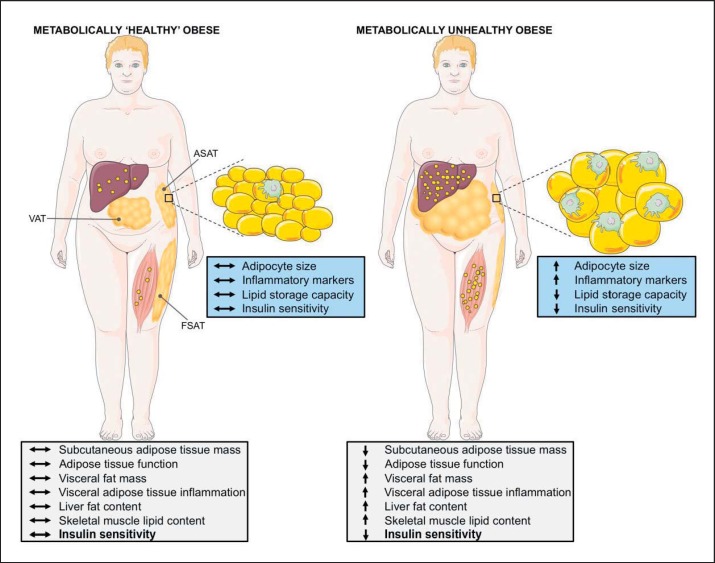Fig. 1.
Differences in adipose tissue function and body fat distribution between MHO and metabolically unhealthy obese individuals. Expansion of adipose tissue does not necessarily translate into metabolic abnormalities. A subgroup of individuals with obesity, referred to as MHO individuals, is relatively protected against the development of cardiometabolic diseases as compared to metabolically unhealthy obese subjects. Emerging evidence suggests that alterations in adipose tissue function and body fat distribution are key factors underlying the metabolically unhealthy obese phenotype. Metabolically unhealthy obese individuals are characterized by lower subcutaneous fat mass, adipocyte hypertrophy, a pro-inflammatory adipose tissue phenotype and an impaired fat storage capacity of adipose tissue, which may result in ectopic fat deposition (i.e., more visceral fat, lipid accumulation in the liver and skeletal muscle) and inflammation in visceral adipose tissue, thereby contributing to the development of insulin resistance and chronic cardiometabolic diseases. ASAT = abdominal subcutaneous adipose tissue; FSAT = femoral subcutaneous adipose tissue; VAT = visceral adipose tissue.

